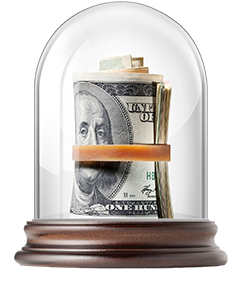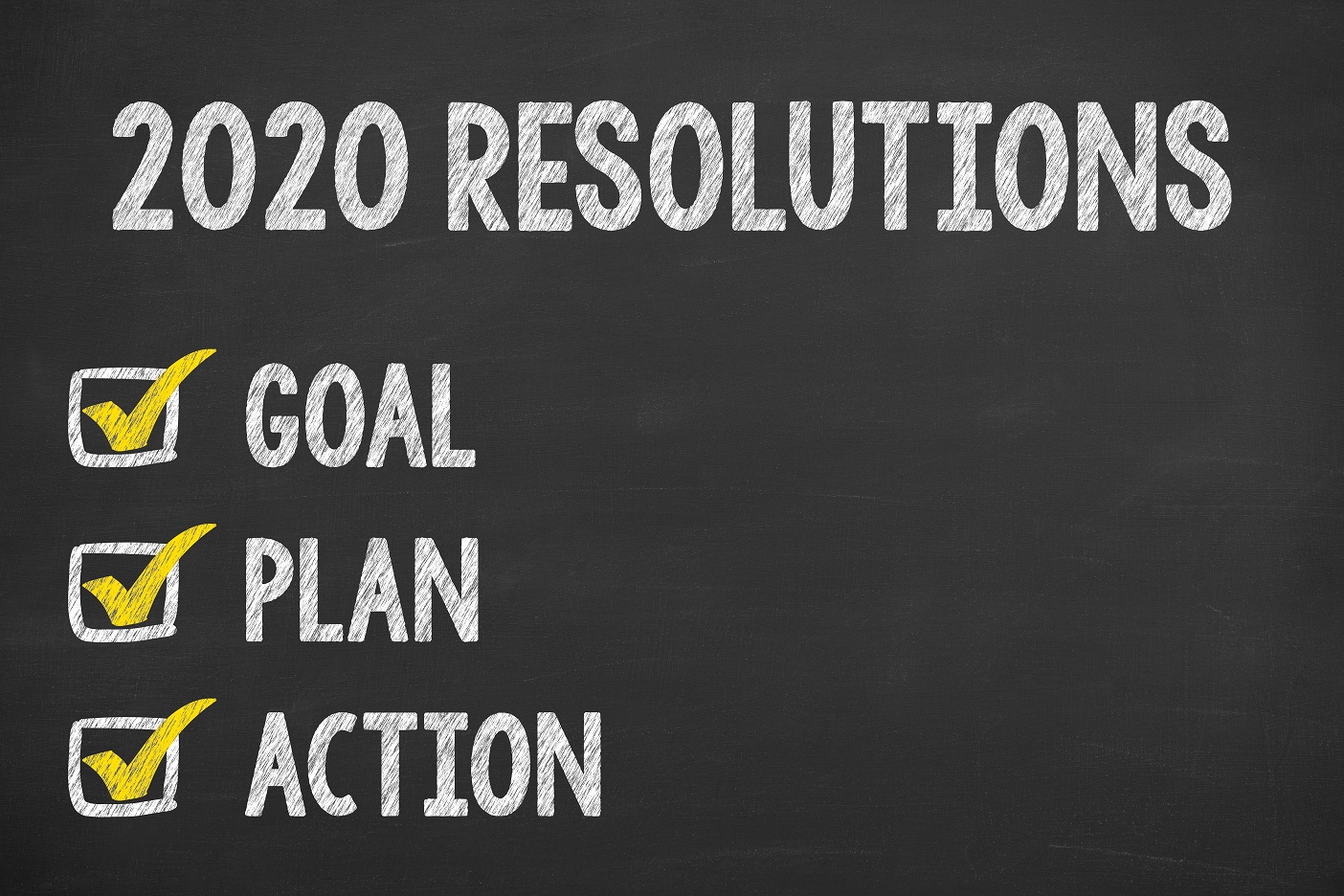How to tell the difference
 Not all debt is created equal. Knowing the difference can change the way you look at your spending.
Not all debt is created equal. Knowing the difference can change the way you look at your spending.
Good debt adds value
Good debt often leads to financial growth, because the product or service being purchased adds more value than the debt that comes with it. Student loans are usually an example of good debt because the related education allows you to earn more income.
Some purchases result in value more directly. Taking on a mortgage, for example, can be valuable simply by giving you access to a place to live all while building equity. Additionally, a mortgage is often considered good debt because your property can be used as collateral for other debt once you’ve made some payments on it, or your home has gained in market value. Even better, good debt often comes with a tax deduction on the interest you pay on things like your mortgage or student loans.
Bad debt adds expense
Credit card debt is almost always bad debt. Not only are interest rates on credit cards higher than most other types of debt, but most purchases made with credit cards are for things that do not contribute to personal financial growth. In fact, interest expense is so high that credit card companies are now legally required to display the cost of this debt directly on their billing statements. Auto loans are another example of bad debt, because cars usually lose value quickly, often leaving more money owed on the debt than the car is worth! But even good debt can turn bad if there is too much of it. Take out too large a mortgage and you may struggle to make payments!
Debt always means higher cost
Debt’s big benefit is allowing you to pay for something over time. The cost of any purchase using debt MUST include the interest expense of taking on that debt. You can compare that with the option of saving up money and then making the purchase without interest. Is the extra interest worth the benefit? Comparing the cost of the purchase with interest, to the value you stand to gain by purchasing the asset, can help you determine whether using debt is a good or bad choice for you.
Final thoughts
Here are some ideas on how to manage good versus bad debt.
- Consider carefully what you can afford and make a plan for how you will pay off any debts before you take on the debt.
- Never carry a balance on a credit card unless it is an emergency. Pay the balance in full every month.
- Calculate the entire cost, including interest, of anything you purchase using debt. This is the REAL cost of an item.
- Use savings, whenever possible, to purchase goods and services that would otherwise be considered bad debt.
- Pay off high interest debt first.
- Financial growth is often the key measure for defining good versus bad debt, but not always. Other factors, like personal interest, growth, and well-being can also be measures for your debt decisions, as long as you can truly afford the payments.
Reach out for help if you aren’t confident whether a potential debt will be beneficial or harmful. Making the right choice could save you money.
When it comes to money topics, you’re always hearing how to save more. But even with the best of intentions, you can run into trouble when you try to save too much. Here are four ways that savings can get in your way and how you can correct them.
 Savings that turns into spending. Buying something on sale to save money is still spending. Focus on the amount of money you have to part with, instead of focusing on the great deal. These deals use the human emotion of the fear of losing out, causing you to spend money you did not plan on spending in the first place.
Savings that turns into spending. Buying something on sale to save money is still spending. Focus on the amount of money you have to part with, instead of focusing on the great deal. These deals use the human emotion of the fear of losing out, causing you to spend money you did not plan on spending in the first place.
What you can do: Plan your purchases. If something on your list of planned purchases is then on sale, you will truly be saving money. So instead of saving 50% on a new lawn mower, save 100% because you already have one that works just fine.
Savings that turns into hoarding. This could happen if you have a hard time parting with things for fear you might be able to use it in the future. This could be as simple as buying a new set of dishes or a new pair of shoes and hanging on to the old ones just in case. Each time you acquire something new without throwing out the old, your house gets stuffed with items you don’t need.
What you can do: When you need to replace something, try to sell the old item right after bringing in the new item(s). Not only will this keep the clutter out of your home, it will effectively lower the cost of the replacement. And periodically review the contents of your household. Have you used it in the last 12 months? If not, chances are good that you won’t need it in the foreseeable future.
Not replacing things when you should. This savings behavior might actually be costing you money. For example, that old water heater still works, but it could be so inefficient that it is costing a ton in excess electricity or gas. The same could be true with an old car’s maintenance bills or even wearing clothes even though you’ve worn holes in them.
What you can do: Consider replacements as investments. For instance, replacing the old brakes in your car is an investment in your safety. Replacing your worn out shoes is an investment in your comfort. Replacing your toothbrush that is falling apart is an investment in your health.
Risking damages or dangers. It’s great to save money by doing something by yourself, but know your limits. Sure, cutting down that old tree by yourself can save you a ton of money. But the emergency room is full of do-it-yourself savers who lack the experience to do it safely. The same can be true with making financial decisions or even wading through the tax code on your own.
What you can do: Know your limits and ask for help. Sometimes paying a little more is worth it if it means avoiding a potentially dangerous or financially negative situation.
Which unique method of budgeting will work for you?
 You have your own unique personality, preferences and lifestyle. Likewise, how you manage and organize your finances can have its own personality, including how you budget. Here are five different methods of budgeting, each with a distinct way of helping you organize your spending and finances.
You have your own unique personality, preferences and lifestyle. Likewise, how you manage and organize your finances can have its own personality, including how you budget. Here are five different methods of budgeting, each with a distinct way of helping you organize your spending and finances.
- Traditional budget. Use last year’s budget as a base, make any necessary adjustments due to changes in your income or expenses, and create your budget by taking your income minus your expenses to equal the amount you have to spend.
- Envelope budget. Keep a set amount of cash for the month in envelopes labeled with an expense category like groceries, clothing, eating out, entertainment, etc. Use one envelope per expense category. If you run out of money in one envelope, you can dip into other envelopes, but this will obviously impact spending in those areas.
- Reverse budget. Instead of stashing away the money left over after you’re done spending for the month, first take out your portion for savings and then spend the amount of money that remains. Reverse budgeting is an effective way to prioritize saving for your future retirement, an emergency or rainy-day fund, or other big expenses like a vacation, a new car, or a down payment on a house.
- Zero-based budget. Know where each dollar is going and record every single dollar spent. Also called the zero-sum or down-to-the-dollar budget, this method helps you get specific about spending and keeping track of all your dollars. Instead of one amount allotted for food, you know exactly how much you will spend on groceries, lunch while at work, and dining out. Instead of one amount allotted for savings, you know exactly how much you are putting into retirement, loan repayment, and emergency savings.
- 50/20/30 budget. Stick to three spending categories. Each month, 50% of your take-home income goes toward needs, 20% toward savings, and 30% toward wants. Examples of needs are housing or car payments and groceries. Savings could be retirement money, paying off loans, and emergency funds. Wants include things like shopping, vacation, or entertainment. Less detailed than the zero-based or envelope methods but more detailed than traditional or reverse budgeting, the 50/20/30 method helps you monitor money habits by helping you stick to three categories every month.
The best budget approach? One that works for you and one that you will continue to use. So pick an approach and try it. It can really change how you spend your money.
As always, should you have any questions or concerns regarding your tax situation please feel free to call.
 New Year’s resolutions get a bad rap — and for good reason. They are wildly unsuccessful. Millions of people have well-intentioned aspirations for the New Year, but only about one in 10 actually accomplish their goal, according to the Statistic Brain Research Center.
New Year’s resolutions get a bad rap — and for good reason. They are wildly unsuccessful. Millions of people have well-intentioned aspirations for the New Year, but only about one in 10 actually accomplish their goal, according to the Statistic Brain Research Center.
If you dig a little deeper into the reasons why they fail, you find it’s usually not the resolution itself, it’s in the execution. Here are four popular New Year’s resolutions and how to avoid messing them up:
- Resolution #1: Becoming healthier. The most popular resolution can take on many forms — losing weight, getting in better shape, eating healthier, and so on. This resolution usually fails because to be successful, it takes a major lifestyle change. You’re fighting against months or maybe years of poor behaviors, so expecting wholesale changes right out of the gate is not reasonable.
Make it fail-proof: Start with smaller, simpler goals like not eating after 8 p.m., or exercising for 20 minutes a day for three times a week. Hitting manageable goals will build momentum and create good habits. - Resolution #2: Spending less money. Depending on how much you spent on Christmas, this one might take care of itself for a few weeks. But if you don’t have a spending plan or budget, old spending habits will re-emerge.
Make it fail-proof: Take some time at the beginning of the year to jot down some long-term spending and savings goals and then work backwards to figure out how those goals will affect your weekly purchases. As the year goes on, continue to track your progress and evaluate your purchases. - Resolution #3: Getting more organized. Going from being disorganized to organized is not a quick fix. To make the switch, it takes an evaluation of your entire environment. Most people don’t have the time for such an extensive process so they buy some bins, stuff them full and call it good. That’s not going to work and it’ll cost you money.
Make it fail-proof: Instead, start small. Pick one room in your house or one aspect of your life to focus on, like health care bills or your tax documents. Once you get some traction, you can apply the methods you learned to other things. Incremental improvement is the best long-term approach. - Resolution #4: Spending less time on electronics. If this is a resolution that’s important to you, odds are you’ve had some trouble keeping electronic usage under control. With so many games, social media and streaming options at our fingertips, our brains are now conditioned to be engaged electronically at all times.
Make it fail-proof: One way to start to break this habit is to change the accessibility you have to your devices. Remove apps from your phone and keep your devices out of reach when you don’t need them. Another way to curb electronic usage is to form a different habit, such as reading.
Resolutions, whether at New Year’s or any other time, are a good thing. To be successful, more planning and attention are required than most people think. And if you slip up, don’t quit! Learn from your mistakes and keeping going.
If you’ve ever attended a state or county fair, you know it’s really easy to spend a lot of money, and fast. The best way to avoid overspending is to know the problem areas and be prepared. Here are five typical fair spending traps (and tips to avoid them):
 Paying full price for admission. In 2019, the price of admission for a state fair can cost a family of four well over $50. Most fairs offer pre-sale discounts or set aside days with special rates. Some examples include half-price admission days, opening day, closing day or certain days during the week. In addition to admissions discounts, you can often find discounted ride tickets or coupons for food or attractions before the day you head to the fair.
Paying full price for admission. In 2019, the price of admission for a state fair can cost a family of four well over $50. Most fairs offer pre-sale discounts or set aside days with special rates. Some examples include half-price admission days, opening day, closing day or certain days during the week. In addition to admissions discounts, you can often find discounted ride tickets or coupons for food or attractions before the day you head to the fair.
Not having a food strategy. Do you really need that whole deep-fried onion? Or entire bucket of fries? If you go to the fair with some friends, opt for the small portion, wide variety strategy. Take turns buying the goodies and share. It’s a perfect way to try new things without overindulging! Your budget (and digestive system) will thank you later.
Impulse buying. While it’s really cool that the blender can turn a bushel of apples into a smoothie in six seconds, it doesn’t mean it’s worth $300. There are a lot of fun and unique products to buy at the fair, but have a plan. If you will be doing some shopping, identify your needs and create a spending budget prior to taking in the product demonstrations.
Ignoring the weather. All it takes is a pop-up thunderstorm or unexpected heat wave and you can watch the prices on ponchos and bottled water shoot up faster than Old Faithful at Yellowstone National Park. Before you go, check the weather, bring appropriate gear and empty water bottles to fill at free water stations.
Falling for carnival gimmicks. All you need to do is make one of three basketball shots to win that huge pink gorilla. Don’t fall for it. Chances are the rim is one foot higher, two inches narrower and the ball might even be egg-shaped. Go ahead and give it a try for fun — just try not to get frustrated if you don’t hit the shot. Carnival games can be a good time if you have the right mindset. Treat them as entertainment, not a way to easily win a valuable prize.
Fairs are a great way to spend a late summer or fall day and make some memories. Saving some cash with some savvy decisions makes it even better!
Three of every four Americans got a refund check last year and the average amount was $2,777, according to IRS statistics. Because the amount of a refund is often uncertain, we may be tempted to spend it without too much planning. One way to counteract this natural tendency is to come up with a plan beforehand to spend your refund purposefully.
Here are some ideas:
Pay off debt. If you have debt other than your home mortgage, a great spending priority can be to reduce or eliminate it. The longer you hold debt, the more the cumulative interest burden weighs on your future plans. You have to work harder for longer just to counteract the effect of the debt on your financial health. Start by paying down debts with the highest interest rates and work your way down the list until you bring your debt burden down to a manageable level.
Save for retirement. Saving for retirement works like debt, but in reverse. The longer you set aside money for retirement, the more time you give the power of compound earnings to work for you. This money can even continue working for you long after you retire. Consider depositing some or all of your refund check into a Traditional or Roth IRA. You can contribute a total of $5,500 to an IRA every year, or $6,500 if you’re 50 years old or older.
Save for a home. Home ownership is a source of wealth and stability for many Americans. If you don’t own a home yet, consider building up a down payment fund using some of your refund. If you already own a home, consider using your refund to start paying your mortgage off early.
Invest in yourself. Sometimes the best investment isn’t financial, but personal. If there’s a course of study or conference that would improve your skills or knowledge, that could be a wise use of your money in the long run.
Give some of it away. Helping people, and being able to deduct gifts and charity from your next tax return, isn’t the only benefit of giving to a good cause. Research shows that it makes us feel good on a neurological level. In fact, donating money activates our brains’ pleasure centers more than receiving the equivalent amount.1
If a refund is in your future, start planning now on how it can best help your financial situation.